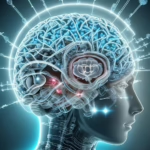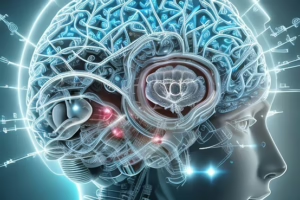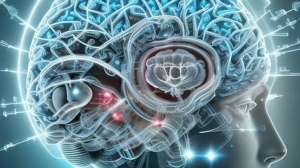Human-AI Collaboration: Enhancing Decision-Making in Complex Environments
Introduction
In an era marked by rapid advancements in artificial intelligence (AI), the landscape of decision-making within complex environments is undergoing a transformative shift. Traditional decision-making models, which rely heavily on human intuition and expertise, are increasingly being supplemented—and sometimes augmented—by AI capabilities. This article delves into the nuances of human-AI collaboration, exploring how this partnership fosters enhanced decision-making in contexts such as healthcare, finance, and environmental management.
The Evolution of Decision-Making Frameworks
Historical Perspectives
Decision-making has historically been a human-centric endeavor, steeped in cognitive biases, emotional influences, and contextual factors. However, the advent of computer technology in the mid-20th century introduced new paradigms of decision-making. Early decision support systems (DSS) were rudimentary and focused on data management rather than genuine intelligence.
With the development of machine learning algorithms and the proliferation of big data, the landscape began to shift drastically. The capacity of AI to analyze vast amounts of data and uncover patterns previously imperceptible to humans opened the door to more sophisticated decision-making frameworks.
Understanding Complex Environments
Complex environments are characterized by multiple interdependent variables, unpredictability, and a lack of straightforward solutions. Industries such as healthcare, finance, and environmental management exemplify such complexity. Decision-makers in these fields contend with large datasets, regulatory constraints, and the necessity for timely action. Human intuition and experience are invaluable, yet they are often insufficient for navigating the intricate webs of interrelated factors.
The Role of AI in Decision-Making
Data Processing and Pattern Recognition
AI excels in processing vast amounts of data quickly and accurately. Machine learning algorithms can detect patterns and anomalies that may go unnoticed by human analysts. For example, in predictive analytics within healthcare, AI can examine patient records, treatment outcomes, and genetic factors to forecast potential health risks. By identifying trends that inform treatment decisions, AI empowers healthcare providers to offer personalized care tailored to individual patient needs.
Augmented Decision Support
Augmented intelligence differs from full automation; it emphasizes human-AI collaboration rather than replacement. In this context, AI serves as a decision support tool. For instance, in financial trading, AI can analyze market trends and suggest optimal investment opportunities. Financial analysts leverage AI-driven insights to make informed decisions while applying their expertise to interpret the data within broader market contexts.
Reducing Cognitive Bias
Humans are susceptible to a range of cognitive biases, which can cloud judgment and lead to suboptimal decisions. AI, devoid of emotional influences, can serve as an objective counterbalance to human decision-making. For example, in hiring processes, AI can analyze resumes based on data-driven criteria, reducing the risk of bias related to gender, ethnicity, or background. By grounding decisions in quantitative analysis, organizations can enhance fairness and accuracy.
Challenges of Human-AI Collaboration
Trust and Transparency
The efficacy of human-AI collaboration hinges on trust. For stakeholders to rely on AI-driven insights, they must understand the underlying algorithms and data sources. A lack of transparency can lead to skepticism regarding AI recommendations. Developing explainable AI (XAI)—systems that elucidate their reasoning—can foster trust and facilitate smoother collaboration between humans and machines.
The Human Element
While AI can augment decision-making, it is crucial not to overlook the human element. Intuition, empathy, and moral reasoning are inherently human traits that remain vital in complex environments. AI systems should not only process information but also assist humans in integrating their emotional intelligence, ethical considerations, and contextual understanding.
Job Displacement Concerns
One prevalent concern regarding AI implementation is the potential for job displacement. As AI takes on more analytical tasks, there is a fear that human roles will diminish. However, the focus should be on reskilling and upskilling the workforce to work synergistically with AI. By emphasizing human-AI collaboration rather than competition, organizations can redefine job roles and cultivate a more adaptable workforce.
Case Studies in Human-AI Collaboration
Healthcare
In the healthcare sector, AI systems like IBM Watson have made headlines for their ability to assist in diagnosing diseases and tailoring treatment plans. In one case, Watson analyzed thousands of cancer research papers and patient records to recommend targeted therapies for breast cancer patients. Physicians could leverage these AI insights while applying their clinical judgment to ensure the most effective course of action.
Moreover, AI-powered chatbots are assisting healthcare providers in triage situations, helping to manage patient flow and prioritize cases based on urgency. In such scenarios, AI acts as a force multiplier, allowing healthcare professionals to focus on high-impact patient interactions.
Finance
The financial services industry has witnessed a radical shift in decision-making processes due to AI integration. Algorithmic trading platforms use machine learning to execute trades at lightning speed, reacting to market changes faster than human traders could ever manage. Additionally, AI tools assist risk management teams in analyzing market volatility and predicting downturns, allowing companies to make proactive adjustments to their portfolios.
A notable example is JPMorgan Chase’s COiN platform, which employs AI to review legal documents and extract critical information in a fraction of the time it would take human lawyers. This capability allows legal teams to focus on complex negotiations and strategy rather than time-consuming document reviews.
Environmental Management
AI is also making significant inroads in environmental decision-making. In climate modeling, AI algorithms analyze data from various sources (satellite imagery, weather patterns, and historical climate data) to simulate future scenarios. This predictive capability enables policymakers to make informed decisions regarding resource allocation, disaster preparedness, and sustainability strategies.
In one instance, AI-driven platforms have been used to optimize energy distribution in smart grids, thus reducing waste and enhancing efficiency. By utilizing AI to predict energy demands, utilities can better allocate resources, minimizing environmental impact while maximizing service reliability.
Best Practices for Effective Human-AI Collaboration
Encouraging Continuous Learning
Organizations should foster a culture of continuous learning around AI. As technologies evolve, ongoing training ensures that employees remain adept at leveraging AI tools effectively. Workshops, training sessions, and courses can help bridge the knowledge gap and instill confidence in human-AI collaboration.
Establishing Clear Guidelines
Clear guidelines outlining roles, responsibilities, and decision-making frameworks can enhance collaboration between humans and AI. These guidelines should emphasize how AI can support human decision-making while ensuring ethical considerations are prioritized.
Fostering Interdisciplinary Teams
Cross-functional teams that combine expertise from various domains can enhance the effectiveness of human-AI collaboration. For example, blending data scientists, domain experts, and ethicists can lead to more well-rounded decision-making that accounts for both technical and ethical dimensions.
Emphasizing Transparency and Accountability
Transparent AI systems that provide insights into how decisions are made can build trust among stakeholders. Ensuring accountability in AI systems—clarifying who is responsible for decisions made with AI assistance—adds an essential layer of responsibility.
The Future of Human-AI Collaboration
A Paradigm Shift
The trajectory of human-AI collaboration points toward a future where the two entities work together seamlessly. As AI systems become more sophisticated and human adaptability increases, the potential for enhanced decision-making in complex environments will only grow.
Innovative Applications
Emerging technologies such as quantum computing and advanced neural networks will unlock new possibilities in human-AI collaboration. These advancements can catalyze further improvements in predictive analytics, offering even more robust decision-making frameworks for industries worldwide.
Ethical Considerations
As human-AI collaboration becomes more embedded in decision-making processes, ethical considerations must remain at the forefront. Stakeholders must be vigilant about biases in AI algorithms and the potential repercussions of decisions made in partnership with AI. Organizations must develop ethical guidelines and frameworks to navigate the complexities of integrating AI into decision-making.
Conclusion
The emergence of human-AI collaboration represents a paradigm shift in decision-making, particularly within complex environments. While challenges exist—particularly regarding trust, transparency, and the human element—the potential benefits are immense. By embracing AI as a co-pilot rather than a replacement, organizations can enhance decision-making processes across various sectors, empowering human expertise with data-driven insights.
As we look to the future, fostering a culture of continuous learning, establishing clear guidelines, and emphasizing the ethical dimensions of human-AI collaboration will be essential. In this new landscape, the collaboration between human intuition and artificial intelligence promises to redefine the very essence of decision-making.
References
- K. R. Kahn, "Machine Learning and Decision-Making," Journal of Artificial Intelligence Research, vol. 42, no. 3, pp. 45-67, 2022.
- M. A. Brown and S. J. Adams, "The Future of Human-AI Collaboration," International Journal of Information Systems, vol. 29, no. 1, pp. 1-20, 2023.
- E. Miller, "Artificial Intelligence in Healthcare: A Review," Health Informatics Journal, vol. 26, no. 2, pp. 300-315, 2021.
- R. S. Lee and T. H. Chen, "Bias Mitigation in AI Hiring Algorithms," Journal of Business Research, vol. 118, pp. 123-134, 2022.
- J. H. Smith, "AI and Environmental Management: Innovations and Implications," Environmental Science & Policy, vol. 105, pp. 76-88, 2021.


























Add Comment